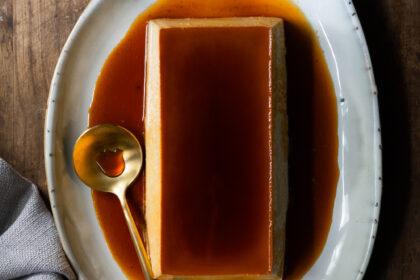
In the last month of my pregnancy in 2010, I joined an aqua aerobics class. The class was filled with older ladies, gracefully exercising in the gym pool with their vintage swimming caps on. One of these darling old tannies told us about a batch of apricots that was scheduled to arrive somewhere in November from a farm in Montague. We could order these apricots in boxes of around 9 kilograms each, paying a mere R42 per box. I placed my order, and collected it from her house in Stellenbosch, 9 days after the birth of my baby. I remember it was the first time ever that I was behind the wheel on my own with that little bundle in her car seat – nerve-wracking. Nevertheless, I collected the apricots and attempted my first batch of apricot jam.
The thing is, my mother in law is the absolute queen of jam cooking. Her apricot jam could win international prizes, that’s for sure. Every year around Christmas, she brings us boxes full of apricot and strawberry jams – huge glass jars that would last us the whole year. That means my meager attempt to cook apricot jam is actually only a way of humoring myself. It would never be in the league of my mother in law’s jam. But there is something very satisfying about cooking jam. For one, it gives me an opportunity to use my fabulous 16 liter stainless steel pot, which I patiently store for “occasions like this” (maybe once a year). Secondly, you feel like an amazing person for being able to cook great jam (trust me on this one).
The tannie at the house where I collected the fruit, suggested that I stone the apricots, then leave them overnight in the pot with the sugar on top, covered. How much sugar, I asked? The same amount in weight as the fruit. Wow, that is a LOT of sugar. No water? Nope, no water. Just the fruit and the sugar. Maybe a squirt of lemon juice, if you like.
So that is what I did. The next morning I turned on the stove plate and started to cook the jam. My first attempt came out great: a darker jam, but set to a perfect tight jelly. This year, I ordered from the same tannie, and collected my apricots last week. I cooked my jam over the weekend, taking care not to let the jam get too dark. This time, it didn’t set as hard, but had a beautiful “lava” consistency with the most delicious, fruity and vibrant apricot taste you can imagine. I bottled 22 jars, and will label them today to give to friends for Christmas.
Some tips on cooking jam:
- use fruit that are under-ripe or just ripe (not over ripe)
- for apricot jam, choose bigger apricots rather than the smaller varieties – they produce a better jam
- invest in a simple sugar thermometer, that way you don’t have to guess the setting point
- don’t EVER leave the boiling jam unattended on your stove top – it can cause huge accidents!!
Ingredients:
fresh apricots (I used around 8 kilograms, stoned)
sugar (the same amount in weight as the fruit)
1-2 tablespoons of lemon juice
Method:
- Put the stoned apricots, sugar and lemon juice in a large pot (something like a stock pot will do). Leave it overnight, covered
- Heat on the stove top on medium heat, taking care not to burn the bottom. Heat until all the sugar has melted. Watch carefully.
- Bring to a boil on high heat, checking your sugar thermometer often. Take the pot from the heat as soon as it looks like it will boil over, and lower heat before putting it back on the heat. Skim off the top layer of scum if necessary.
- The temperature should reach 105 degrees Celsius, or 220 Fahrenheit. It should take around 30-40 minutes to get to that stage.
- Put a small spoonful of jam on a chilled plate, wait for it to cool down, then test with your finger if the jam wrinkles slightly when pushed to the side. If that happens, it is ready to bottle.
- Ladle into sterilized jars, and place lids on immediately (use a cloth to handle the warm jars).
- While the jams are cooling, you will start to hear “popping” sounds made by the lids – that means the lids sealed correctly and the jam will keep for months, stored in a cool, dark place.
Spread generously on fresh bread, crisp toast, warm scones or muffins, use in marinades and sauces, in baking etc.


Awesome stuff Ilse, I’m so into making jam but must say since I have discovered making small batch jam in 10 minutes, its twf for me.
10 minutes?? Now you’re talking! Do you have a recipe on your blog? x